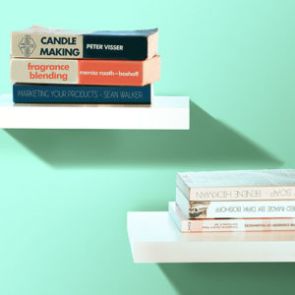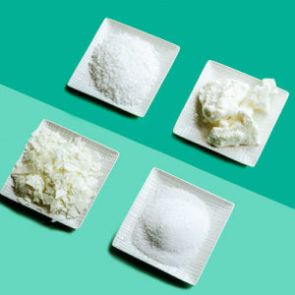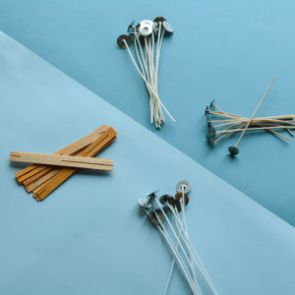Cold Process Soap - Beginner Premix Recipe
This beginner friendly premix of oils is specifically designed to make your life easier.
Our Basic beginner premix oils contain a 1000g of oils consisting of the following oils including 5% superfat:
- Coconut Oil: 24%
- Olive Oil: 44%
- Palm Oil: 32%
- For this recipe we will use a 33% lye concentration.
Ingredients
- 1x Premix Recipe 1: Basic Beginner recipe
- 287g Distilled/De-ionised water
- 141g Sodium Hydroxide
- Colorant (optional)
- Fragrance oil or essential oil (optional)
Equipment Needed
You will need the following equipment.
- Mixing bowl/Jug (2liter at least)
- Stick Blender
- Spatula
- Spoon
- Separate heat safe container for mixing sodium hydroxide
- Soap mould (this recipe makes roughly 1458.63g of soap and will fit the purple silicone wooden box mould perfectly)
- Infrared thermometer
Method
Preparation
Suit up for safety… Gloves, protective eyewear, mask (when mixing lye), long sleeves, long pants, and close toed shoes.
Prepare your lye solution by measuring 287g of distilled or de-ionised water into a heat safe container.
In a separate container measure out 141g of sodium hydroxide.
Add your sodium hydroxide to your water (NEVER THE OTHER WAY AROUND) and mix thoroughly but gently until your lye is completely dissolved.
Place the sealed premix bag into a pot of hot water over medium heat on the stove until all the oils are melted. Your oils should be clear when everything is properly melted. Pour your oils into your mixing bowl/jug.
Step 1: Cooling NOTE: You should wait until your oils and lye solution reach around 32 degrees Celsius. Your lye and oils do not have to be the exact same temperature but should be close and no hotter than 33 degrees Celsius as hotter temperatures can accelerate trace and cause your batter to heat up too quickly or even overheat.
When you reach the correct temperature, you can add your lye solution into your oils carefully, taking care not to splash or cause bubbles.
Step 2: Blending Take your stick blender and place it into the oils. Gently shake it around to release any trapped air underneath it, if not done, it will cause air pockets in your soap.
Now stick blend on low for only about 10 seconds, moving the stick blender around to make sure your blend evenly. Depending on your preference, you can blend to emulsion, light, medium or thick trace.
At this point you will want to add any colourant or fragrance if you prefer. Blend these in by hand and pour you batter into your mould.
Step 3: Pouring & Moulding Tap your mould on the ground a few times to release any trapped air.
You can texture the top using a spoon or swirl with a skewer.
You can spray the top with 99% Isopropyl Alcohol to prevent soda ash and leave uncovered. Or you can insulate with cardboard boxes and towels or blankets to force gel phase. Step 5: Curing Wait 18-24 hours to un mould your soap, cut into bars and let cure for 4-6 weeks before selling, using, or giving as gifts.
Note: Always be cautious when working with melted bases. Keep out of reach of children & pets. Own testing/recipes is required.
Prepare your lye solution by measuring 287g of distilled or de-ionised water into a heat safe container.
In a separate container measure out 141g of sodium hydroxide.
Add your sodium hydroxide to your water (NEVER THE OTHER WAY AROUND) and mix thoroughly but gently until your lye is completely dissolved.
Place the sealed premix bag into a pot of hot water over medium heat on the stove until all the oils are melted. Your oils should be clear when everything is properly melted. Pour your oils into your mixing bowl/jug.
Step 1: Cooling NOTE: You should wait until your oils and lye solution reach around 32 degrees Celsius. Your lye and oils do not have to be the exact same temperature but should be close and no hotter than 33 degrees Celsius as hotter temperatures can accelerate trace and cause your batter to heat up too quickly or even overheat.
When you reach the correct temperature, you can add your lye solution into your oils carefully, taking care not to splash or cause bubbles.
Step 2: Blending Take your stick blender and place it into the oils. Gently shake it around to release any trapped air underneath it, if not done, it will cause air pockets in your soap.
Now stick blend on low for only about 10 seconds, moving the stick blender around to make sure your blend evenly. Depending on your preference, you can blend to emulsion, light, medium or thick trace.
At this point you will want to add any colourant or fragrance if you prefer. Blend these in by hand and pour you batter into your mould.
Step 3: Pouring & Moulding Tap your mould on the ground a few times to release any trapped air.
You can texture the top using a spoon or swirl with a skewer.
You can spray the top with 99% Isopropyl Alcohol to prevent soda ash and leave uncovered. Or you can insulate with cardboard boxes and towels or blankets to force gel phase. Step 5: Curing Wait 18-24 hours to un mould your soap, cut into bars and let cure for 4-6 weeks before selling, using, or giving as gifts.
Note: Always be cautious when working with melted bases. Keep out of reach of children & pets. Own testing/recipes is required.




